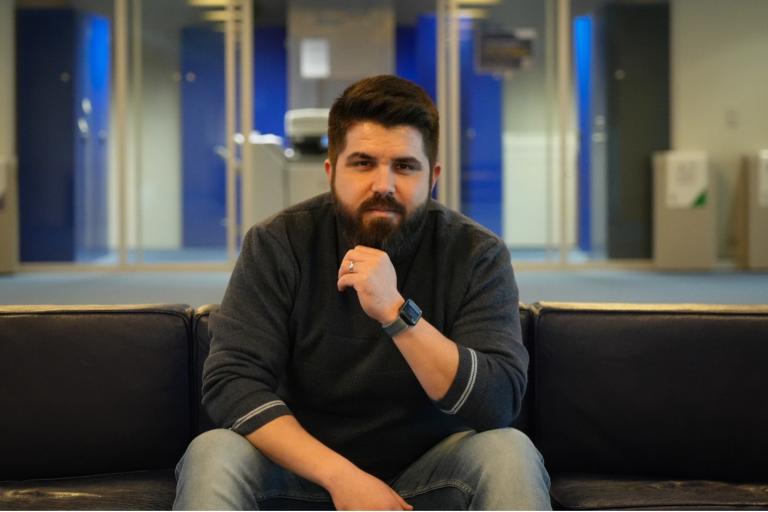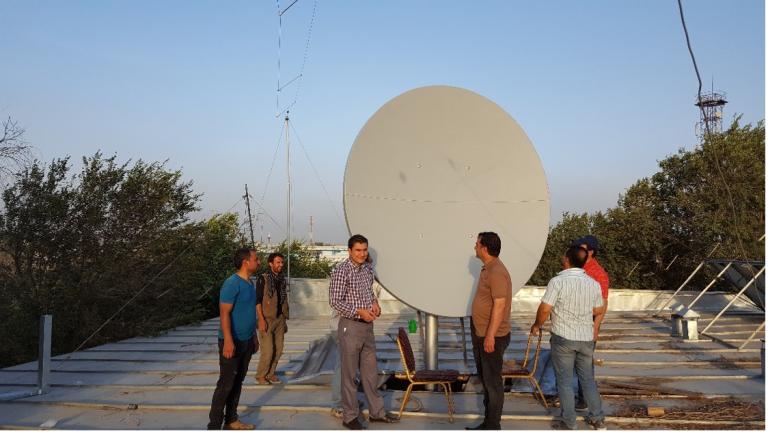From Dream to Climate Action: Advancing Early Warnings for Flashfloods for All

Saraj's career began with a deep passion during his studies at the Hydrometeorological University, where he harbored ambitions of contributing to the WMO—a dream he fulfilled after years of committed work with the Afghanistan Meteorological Department
His journey led him to a pivotal role at the WMO, operationalizing the Flash flood Guidance System (FFGS) with his team, a crucial element in early warning systems that safeguard lives and livelihoods against the devastating impacts of flash floods.
Over a coffee chat at WMO headquarters, Saraj shared his rich experiences with Jesse Cruz, WMO Digital Media and Communication Officer. The purpose of this interview is to inform strategic discussion among WMO Members on how to Integrate the flash flood guidance system into national policies, strategies, and planning.
Interview
Jesse: When did you first join the Afghanistan Metrological Department (AMD)?
Najeebullah: I first joined AMD in 2014.
Jesse: Could you describe the state of AMD’s early warning system when you joined?
Najeebullah: Initially, Afghanistan's meteorological service was relatively unknown, with limited awareness of its existence. The country's meteorological observation capabilities were rudimentary, covering only about 10% of the area with basic equipment. Observations were manually recorded, and due to the absence of government-provided computers, we relied on personal laptops. Our facilities were limited, housed in an old building with scant internet access due to a few available ethernet ports.
Jesse: What responsibilities were you tasked with at AMD?
Najeebullah: Before my arrival, data collection was manually done and logged in synoptic books, resulting in an archive filled with poorly maintained logbooks. My initial role in AMD involved digitizing these records, a task we began around 2015. We reorganized the data into a standardized Excel format from 2022 to 2014 to ensure consistency. Despite some data gaps, we managed to consolidate the archived information into a single, easily accessible location, aiding university students in their research.
Jesse: How did you first learn about the WMO?
Najeebullah: My initial encounter with the WMO and its Flash Flood Guidance System project was met with skepticism. The concept of WMO support was new to us, and past experiences with other organizations had tempered my expectations. However, WMO's assessment of our staff's language skills, professional knowledge, and general awareness was a critical step in preparing us for the project, which promised to bring significant advancements. WMO's methodical training and infrastructure improvements marked the beginning of a transformative journey for AMD towards modernization.

Jesse: What convinced you that the FFGS project would be successful?
Najeebullah: My conviction in the project solidified through two key experiences. The first was issuing our first successful warning, which demonstrated the system's effectiveness and our collective effort. The second, more profound realization came after the change of the government in 2021 when I assumed the role of Acting Director of Meteorology: the critical nature of weather forecasting, especially in restoring national and international flights, reinforced my belief in the project's value.
Jesse: Can you recount the experience of issuing your first warning?
Najeebullah: Issuing our first warning was a defining moment, highlighting the potential of our early warning system to protect communities. Despite the unfortunate casualties in the identified risk area, the accuracy of our prediction was acknowledged by WMO, marking a significant achievement for our team. This event shifted my perspective on the project, enhancing my confidence in its impact and effectiveness.
The support from the Afghanistan President and the Ministry of Transport and Civil Aviation was crucial in overcoming a hiring freeze and ensuring the project's success. Their commitment to investing in young talent and supporting the project's implementation underscored the national importance of our work.

Jesse: What challenges did you face after issuing the initial warning?
Najeebullah: The initial phase was challenging, particularly in disseminating warnings through our website and Facebook. Public skepticism and negative feedback were hurdles we had to overcome. However, following a devastating flash flood in Herat province, which our alert helped mitigate, public trust in our warnings began to grow. This turning point validated our efforts and established a foundation of trust with the community.
Jesse: When did you realize the early warnings were truly making an impact?
Najeebullah: The realization came when Kabul faced significant flooding risk, and the Afghanistan President's involvement, along with media collaboration, highlighted the effectiveness of our warnings and response. Our strategic communication, fostered by WMO training, proved essential in these successes.
Jesse: How did the transition from a WMO-supported to a nationally-supported project occur?
Najeebullah: The transition involved extensive discussions, particularly with the Ministry of Transport and Civil Aviation, where we found enthusiastic support. This collaboration was key in aligning the project with national needs and ensuring its successful implementation.

Jesse: Based on your experience, what was critical in persuading stakeholders to support this initiative?
Najeebullah: Demonstrating the project's impact through real-case studies was vital in persuading stakeholders. Showcasing tangible benefits and successful outcomes helped to build confidence in the project's value and sustainability, highlighting its potential as a model for other countries.
Jesse: Any final thoughts?
Najeebullah: This journey has been a dream come true for me, emphasizing the project's humanitarian goal of saving lives through improved early warning systems and disaster management. The focus on training and empowering local staff aligns with our strategy for sustainable improvement and self-reliance, ensuring the project's lasting impact.
In conclusion, I would like to extend my heartfelt thanks to Fatih Kaya from the WMO for his crucial role in implementing the project. Additionally, my gratitude goes to both the WMO and USAID/BHA for their collaboration and support.

